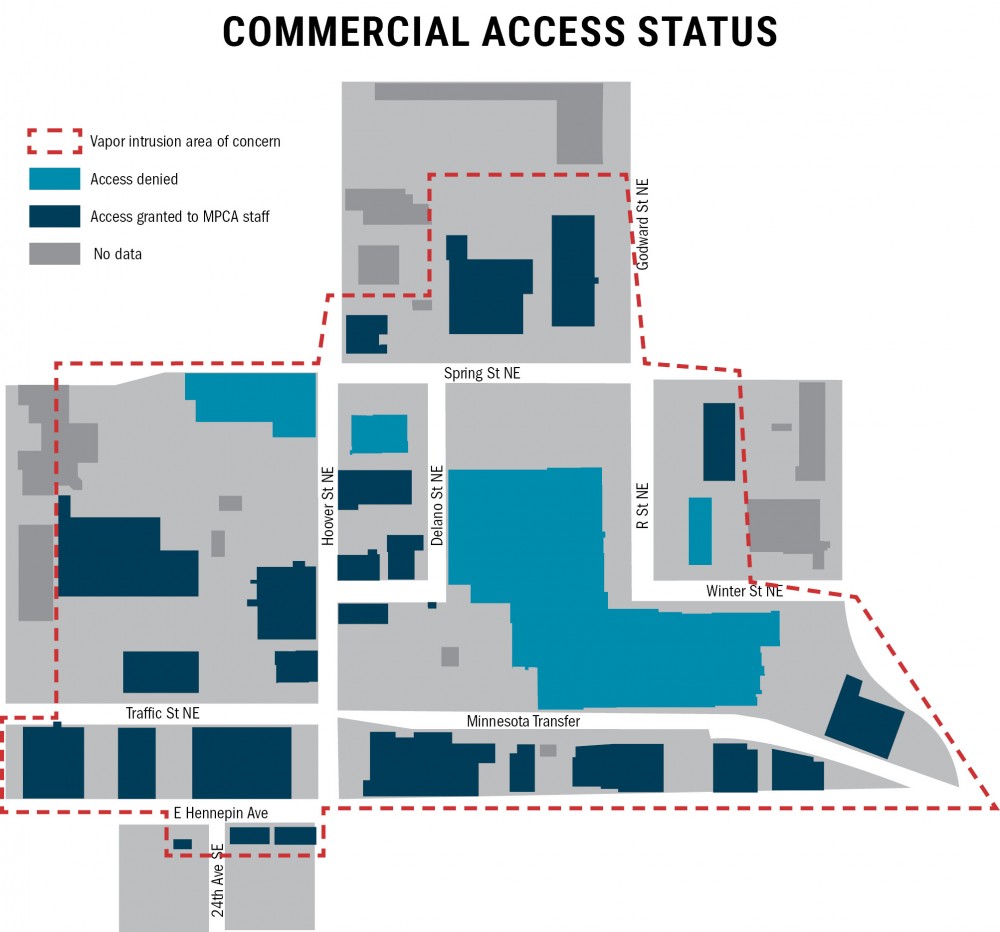Officials don’t know where additional soil contamination from trichloroethylene and other chemicals that have been found in the Southeast Como area are coming from.
Minnesota Pollution Control Agency researchers found more contamination this summer and are looking to gain access to buildings in the area to locate the source. TCE can increase the risk of kidney cancer and has been linked to an increased risk of non-Hodgkin’s lymphoma.
Previously discovered TCE contamination in the area was linked to disposal at a General Mills facility decades ago, but the new findings suggest that the TCE could be originating from more than one place.
“Abundant evidence from environmental sampling and the Minnesota Pollution Control Agency’s own data demonstrates that disposals by entities other than General Mills in the neighboring industrial area have caused contamination that remains today,” Rob Litt, a General Mills spokesperson said in a statement.
Though the source of the new contaminations are unknown, researchers are in the process of gaining access to businesses to conduct studies to locate the main sources of the TCE, said Hans Neve, MPCA Superfund Program Supervisor.
One of the main problems of the contamination is the release of TCE vapor, or “vapor intrusion”. Many homes in Southeast Como have been impacted by TCE contamination from a General Mills site which was found several years ago and have installed a vapor ventilation system to fix vapor intrusion. The MPCA is testing in the sites north of Hennepin Avenue to find the new origin sites, Neve said.
From 1947 to 1962, TCE, an industrial solvent, was disposed of in an “absorption pit” by General Mills at 2010 E. Hennepin Avenue.
Inside the pit were three 55-gallon drums buried 10 to 12 feet below the surface. In 1982, General Mills investigated the site and found that the area’s groundwater and soil were contaminated by TCE.
General Mills was asked to submit a mitigation plan to the Minnesota Department of Health this month but asked for an extension to March 1 to allow for more time to review the case, Neve said.
Neve said an extension is not unusual, and the MPCA generally grants extension requests.
While the source of the newly found contamination hasn’t been determined, Como residents involved in an ongoing lawsuit against General Mills believe it is the company’s duty to take responsibility for the previously discovered contamination.
Shawn Collins, an attorney for the Como residents, said they are bringing the case forward for the damages community members suffered and to force a broad cleanup of the General Mills facility.
“It would be a cleanup not only throughout the Como neighborhood but also at the General Mills site which is a source of the contamination,” Collins said.
He said he expects the company to use the new information to prove they did not cause the earlier contamination since the new points of contamination come from sources other than the General Mills facility.
The Como families were unable to move the case forward as a class action suit, but are continuing with the case regardless.
“For 35 years [General Mills] has been saying it is the source of contamination but is now changing tune and it is interesting to see how it will change,” said Collins.








